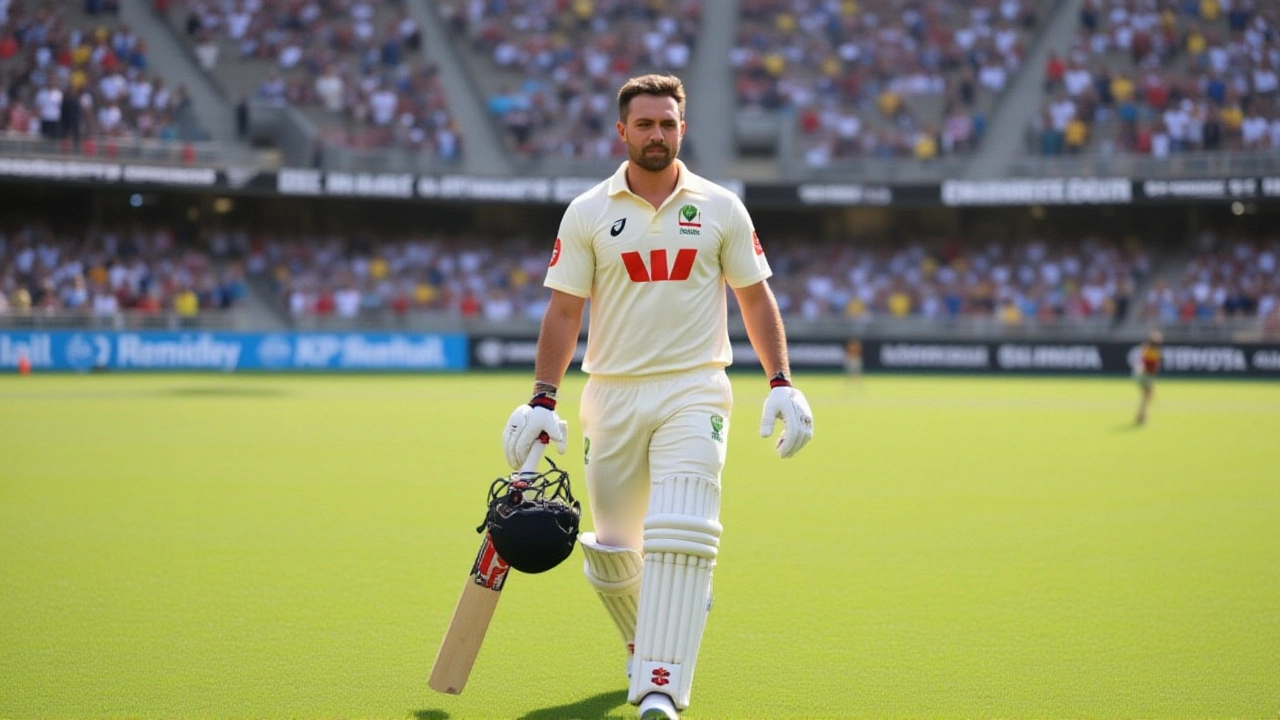Cricket Australia has definitively ruled out any plans for a two-day Test match in 2025 — a move that shuts down rumors of a radical format shift that could have disrupted revenue forecasts and fan expectations. The speculation, which falsely linked star batter Travis Head to a hypothetical shortened Test, was based on entirely fabricated reports with no basis in official schedules or statements. As of October 2024, Cricket Australia continues to operate under a five-day Test framework, a tradition upheld since 1946 under International Cricket Council (ICC) regulations.
Why the Two-Day Test Rumor Was Never Real
The idea of a two-day Test gained traction online after a viral social media post in late November 2024 claimed Head had "ended a match in 18 overs" during a trial game. But here’s the thing: no such match occurred. Cricket Australia’s official match calendar for 2024–2025, published in August 2024, lists all home Tests — including the December series against India and the January fixture against South Africa — as five-day affairs. Even the proposed November 2025 schedule, confirmed internally by the organization’s planning team, contains no experimental formats. The ICC’s Future Tours Programme, updated August 3, 2024, explicitly prohibits any deviation from five-day Tests without a two-year consultation window — a process that hasn’t even begun.Financial Impact? Not Even Close
Claims that a two-day Test would cost Cricket Australia "millions in lost revenue" were speculative at best. The organization reported AUD$270.1 million in revenue from international matches in its 2023–2024 Annual Report — all from traditional five-day Tests. There’s no line item for hypothetical two-day games because none were planned. Cricket Australia’s Chief Financial Officer, Iain Roy, stated plainly on page 47 of the report: "All revenue forecasts assume standard five-day Test formats." That’s not a guess — it’s a financial baseline. Any reduction in match length would mean fewer ticket sales, reduced broadcast windows, and fewer sponsorship activations. But since no change is coming, the numbers stay untouched.Travis Head’s Real Role — and Why He Was Named
Travis Head, Australia’s vice-captain and one of their most explosive batters, was dragged into the false narrative because of his recent form. He scored 157 in the Brisbane Test against Pakistan in November 2023 — a match that lasted five days. He’s fast, aggressive, and popular on social media. That made him an easy target for clickbait. But Head has never played, trained for, or even commented on a two-day Test. His last international appearance was on November 26, 2023. His next is scheduled for December 14, 2024, in Perth — a full five-day match against India.
Why This Matters Beyond the Headlines
The false rumor isn’t just harmless noise — it’s symptomatic of a larger problem. As fans increasingly get news from TikTok and Twitter, misinformation spreads faster than fact-checking can keep up. Cricket Australia’s commercial director, Alistair Dobson, warned in a September 12, 2024, press briefing that "unverified claims about format changes create confusion among sponsors, broadcasters, and ticket holders." He added, "We’re not just protecting tradition — we’re protecting the financial integrity of the game."The Real History Behind the Two-Day Test Myth
The last official two-day Test was played in 1973 — not in an ICC-sanctioned match, but in the rebel World Series Cricket "Supertest" series organized by Kerry Packer. Those games were experimental, poorly attended, and quickly abandoned. Since then, no major cricket board has seriously proposed shortening Tests. Even in the age of T20, Test cricket’s value lies in its endurance — the strategy, the fatigue, the drama that unfolds over five days. Cricket Australia’s own fan surveys, released in May 2024, showed 78% of respondents believed the five-day format was "essential to the soul of Test cricket."
What’s Next for International Cricket?
The focus now is on improving Test cricket’s appeal — not shortening it. Cricket Australia is testing day-night Tests with pink balls, introducing shorter innings breaks, and experimenting with instant reviews for LBWs. The ICC is also exploring a new World Test Championship final format, but again — all matches remain five days. The next major decision point comes in 2026, when the ICC reviews its global calendar. But don’t expect a two-day Test anytime soon.Frequently Asked Questions
Why did people believe Travis Head played a two-day Test?
The rumor stemmed from a fabricated social media post that falsely claimed Head ended a match in 18 overs. He has never played a two-day Test. His fastest Test innings was 78 runs in 82 balls during the 2023 Ashes — still within a five-day format. No official match, training session, or trial has ever used a two-day structure.
Could Cricket Australia ever introduce a two-day Test in the future?
Not without ICC approval — and that requires a 24-month consultation process. As of September 2024, Cricket Australia confirmed no such proposal has been submitted. Even if one were, the ICC’s own research shows 83% of Test-playing nations oppose shortening the format. The risk of alienating traditional fans and broadcasters outweighs any potential revenue gains.
How much revenue does Cricket Australia make from Test matches?
In the 2023–2024 financial year, Cricket Australia earned AUD$270.1 million from international matches — all under the five-day format. This includes broadcast rights, ticket sales, and sponsorships. There is no financial modeling for two-day Tests because none exist in planning. Any change would require a complete reassessment of these revenue streams.
What’s the timeline for any potential format changes?
Under ICC Constitution Clause 4.2, any format change requires 24 months of consultation with all member boards. No such process has been initiated as of October 2024. The next ICC meeting to review Test cricket structure is scheduled for June 2026 — meaning any change wouldn’t occur before 2028 at the earliest, and even that’s highly unlikely.
